Analyzing Intel Core M Performance: How 5Y10 can beat 5Y71 & the OEMs' Dilemma
by Brett Howse & Ian Cutress on April 8, 2015 8:00 AM EST3DMark Ice Storm Unlimited Results
Ice Storm Unlimited is quite a bit different than the last two benchmarks. The test is built for smartphones and tablets, so is far less demanding than the other GPU benchmarks. There are two GPU tests, and a physics test, and as you will see in the graphs, when those workloads are occurring is very obvious. The overall benchmark is quite short though, which allows the devices that have more thermal issues, but higher overall turbo frequencies, to keep the frequencies up much more. It is basically the equivalent of a CPU burst workload, except mostly run on the GPU.
The Core i5 does not even flinch at this workload, even leveraging its turbo when needed. The Venue 11 Pro is the most interesting graph because it so clearly defines when the actual work is happening. Because the duration is so short, it is able to turbo quite high, and the GPU frequencies are not throttled too much. The ASUS does have to throttle the CPU to keep the GPU frequency up on this test. The Yoga 3 Pro shows quite a strong result in this very short test.
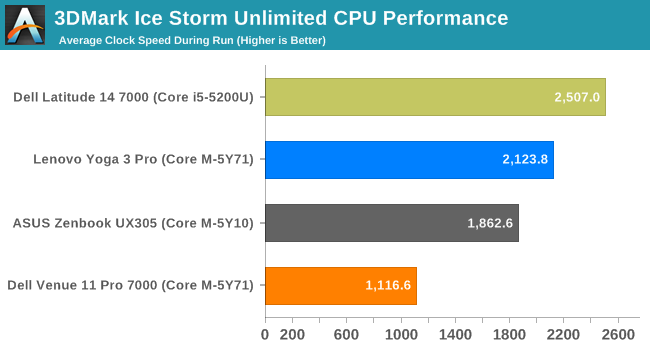
Looking at the average CPU speeds, the Yoga 3 Pro jumps way out in front. The Venue 11 Pro is quite far behind, but as you can see in the graphs, when the work was required, it did have thermal headroom available to turbo.
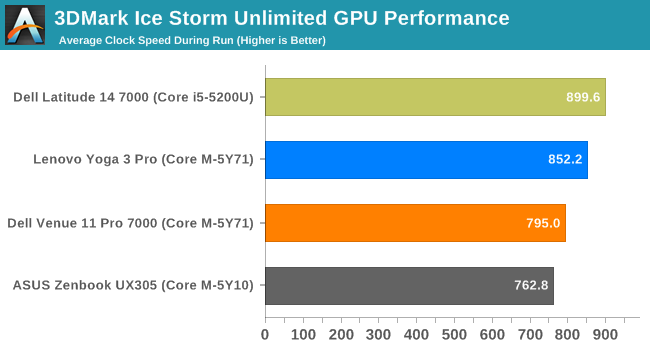
On the GPU front, the Yoga 3 Pro is almost at the same average as the Core i5 in this test, as both have the same base and turbo frequencies. The Venue 11 is only a bit behind, and the ASUS falls to third due to the 100 MHz frequency deficit that the 5Y10 has on the GPU compared to the 5Y71 processor.

On the SoC temperature side, none of the devices struggle with temperature on such a short test.
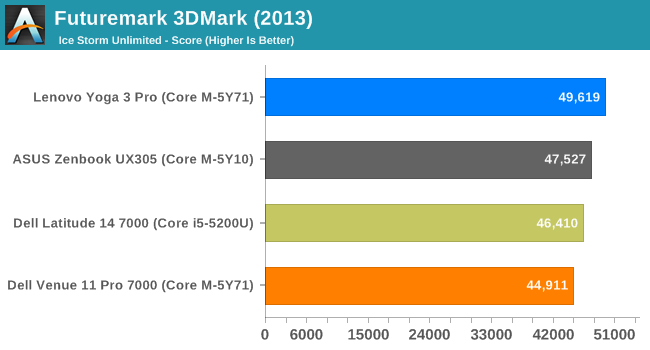
On such a short test, the Core M devices all do very well, and the fastest Core M model in the Yoga 3 Pro tops this GPU test. It is quite a bit in front of the rest of the devices, showing that with active cooling, it can still get a lot of work done in a short amount of time. Remember that the Core i5 Dell Latitude is the only device with single-channel memory, which hurts it most in the GPU tests and explains why it is below the Core M devices despite much higher average frequencies for both the CPU and GPU.


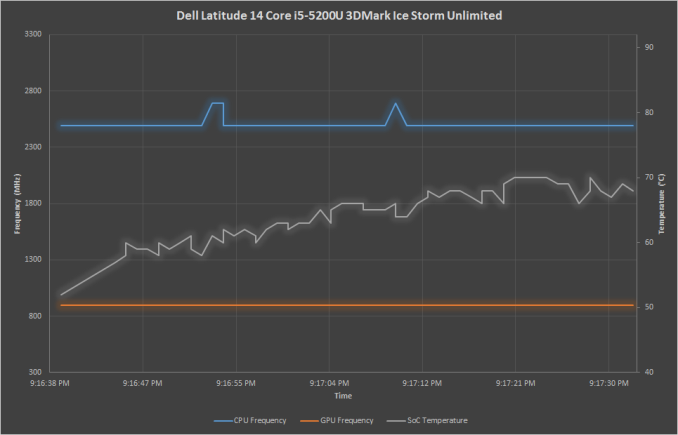
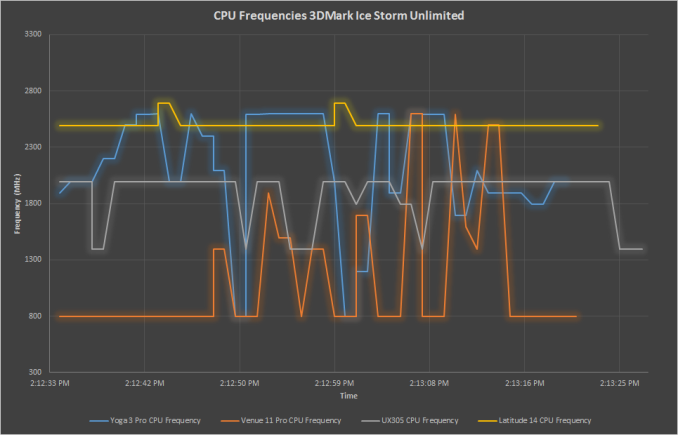
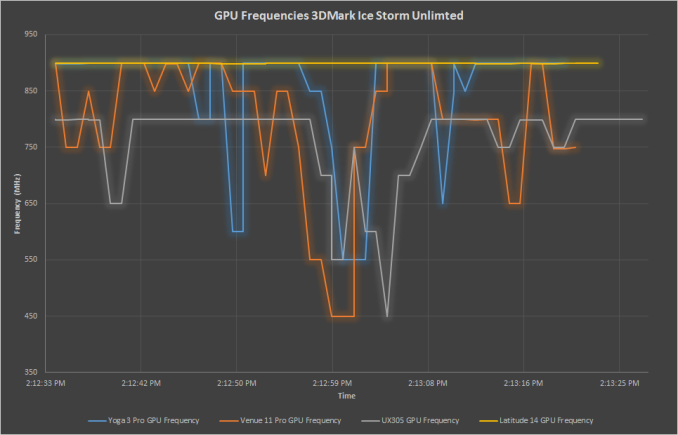









110 Comments
View All Comments
jjj - Wednesday, April 8, 2015 - link
You insist on only showing low power CPU results , because putting them properly in context would hurt sales right? God forbid you include laptops....And today somehow you decided to fully ignore AMD too.
Maybe stop working for Intel and serve your readers instead.
MrSpadge - Wednesday, April 8, 2015 - link
Dude.. WTF?This is an evaluation of what Core M is and what this means for devices using it. It's neither a comparison to other device and CPU classes, nor a general recommendation of this product.
Michael Bay - Wednesday, April 8, 2015 - link
AMD just can`t afford a decent shill anymore.THIS is what they go these days.
xthetenth - Wednesday, April 8, 2015 - link
I guess it's easy to confuse discussions of architectural details for devices that have already been reviewed on this very site with articles comparing those devices to other similar devices when the preexisting reviews contain many of the very comparisons you want.Dorek - Wednesday, April 8, 2015 - link
"And today somehow you decided to fully ignore AMD too."Only because the market does.
Refuge - Wednesday, April 8, 2015 - link
This article was never about comparing the CPU's to AMD or anyone. It was about explaining why we are getting awkward results across the board on the performance of these low TDP Intel parts.Nothing to do with AMD, or even the specific OEM's products either, so much as their construction and heat dissipation performance, but it was only in an effort to further explain the varying results of these low TDP Intel chips.
Pissedoffyouth - Wednesday, April 8, 2015 - link
Haha how does a 4.5w CPU for a laptop have anything to do with a 65w+ desktop CPU?Allan_Hundeboll - Wednesday, April 8, 2015 - link
If he was working for intel he would have included amd's "lowpower" cpuname99 - Wednesday, April 8, 2015 - link
Yeah, it's ridiculous.Why isn't there also a comparison against a POWER8 --- that would DEMOLISH this silly little Broadwell-Y.
And they're going on about how great the power dissipation is? Compare it against an ARM M0 and look who has crazy low power dissipation then!
I demand that every future AnandTech review compare any CPU against every other other CPU in the known universe, no matter how irrelevant the comparison...
lilmoe - Wednesday, April 8, 2015 - link
That price tag makes this the most confusing and out-of-place processor from Intel... Microsoft proved that Haswell-U can power an ultra-thin x86 tablet, have mobile SoC comparable battery life, and price it comparably or even lower than Core M products. All that with the added benefit of better performance...OEMs can take advantage of lower pricing on some Broadwell-U processors, and install a better/thinner active cooling solution with the savings. So where does that put Core M other than "luxury" devices that have no need for "real" performance advantages?
Not for me, thanks... Not at THAT price tag.